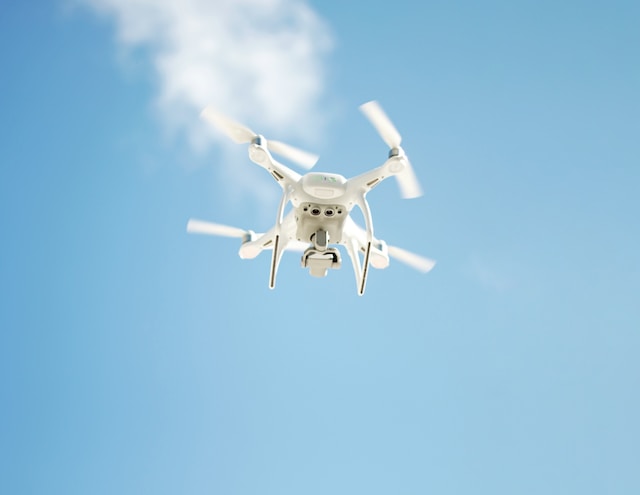
Welcome to the fascinating world of nano-drones, where science fiction becomes a reality. In this blog, we delve into the realm of these miniature marvels that are revolutionizing surveillance and exploration. With the advent of cutting-edge technology, nano-drones have emerged as a futuristic concept that holds immense promise for various industries, including surveillance, exploration, and beyond. Join us as we explore the incredible potential of these tiny yet powerful wonders.
The Rise of Nano-Drones
Nano-drones, also known as micro-drones or mini-drones, are unmanned aerial vehicles (UAVs) that are significantly smaller in size compared to traditional drones. These pint-sized wonders have soared in popularity due to advancements in materials, sensors, and artificial intelligence. The miniaturization of components, such as batteries and cameras, has unlocked endless possibilities for these drones, making them more accessible and versatile than ever before.
Nano-Drones in Surveillance: A Game-Changer
The integration of nano-drones in surveillance operations has been a game-changer. Their compact size and maneuverability allow them to access hard-to-reach areas, making them invaluable tools for law enforcement, security agencies, and disaster response teams. Nano-drones equipped with high-resolution cameras and thermal imaging capabilities can gather real-time data, providing crucial insights and aiding in decision-making processes.
Advancing Exploration with Nano-Drones
Beyond surveillance, nano-drones are transforming the field of exploration. Their lightweight nature allows them to be deployed in remote and challenging terrains, aiding in geological surveys, wildlife monitoring, and environmental research. Scientists and explorers can now venture into areas that were previously deemed inaccessible, uncovering new discoveries and expanding our understanding of the natural world.
Nano-Drones in Industrial Applications
Industries are also harnessing the potential of nano-drones to optimize their operations. In agriculture, these drones are used for precision farming, monitoring crop health, and optimizing resource usage. In construction, they assist in surveying and inspecting structures, enhancing safety and efficiency. Moreover, the film and entertainment industry uses nano-drones to capture breathtaking aerial shots that were once only possible with expensive equipment.
Overcoming Challenges in Nano-Drone Technology
While nano-drones hold immense promise, they also face several challenges. One major concern is their limited battery life, which restricts their flight duration. Researchers are tirelessly working to develop energy-efficient solutions to overcome this hurdle. Additionally, ensuring the security of nano-drones against potential hacking and unauthorized access is a critical aspect that demands continuous attention.
Ethical Considerations
The proliferation of nano-drones raises ethical concerns surrounding privacy and surveillance. Striking a balance between the benefits of surveillance and safeguarding individuals’ privacy remains a pressing challenge. Policymakers and technology experts are collaborating to establish guidelines and regulations to address these ethical dilemmas effectively.
The Future of Nano-Drones
As technology continues to advance, the future of nano-drones looks even more promising. With ongoing research and development, we can expect improved battery life, enhanced AI capabilities, and greater resilience to environmental factors. This will open up new possibilities in fields such as wildlife conservation, disaster response, and even space exploration.
Final Words
In conclusion, nano-drones represent a remarkable leap in technology, opening up new possibilities for surveillance and exploration. These miniature marvels have proven their potential in various industries, from security and agriculture to filmmaking and scientific research. While challenges exist, the continuous innovation in nano-drone technology promises a bright future where they will become even more integral to our daily lives.
Commonly Asked Questions
1. How far can nano-drones fly on a single charge?
Nano-drones typically have a flight time ranging from 10 to 30 minutes, depending on their size and features. Advancements in battery technology aim to extend this duration further.
2. What safety measures are in place to prevent nano-drones from crashing into each other?
Collision avoidance systems, incorporating sensors and AI algorithms, are being developed to enable nano-drones to detect and avoid obstacles and other drones in their vicinity.
3. Are nano-drones affordable for personal use?
While some entry-level nano-drones are relatively affordable, advanced models with sophisticated features can be more expensive. However, as technology evolves, costs are likely to decrease.
4. Can nano-drones be used for scientific research?
Absolutely! Nano-drones are already being employed in various scientific research, including environmental monitoring, wildlife tracking, and geological surveys.
5. What are the privacy concerns associated with nano-drones?
Privacy concerns primarily revolve around the potential misuse of surveillance capabilities. Regulations and policies are being developed to protect individuals’ privacy while leveraging nano-drones’ benefits.












